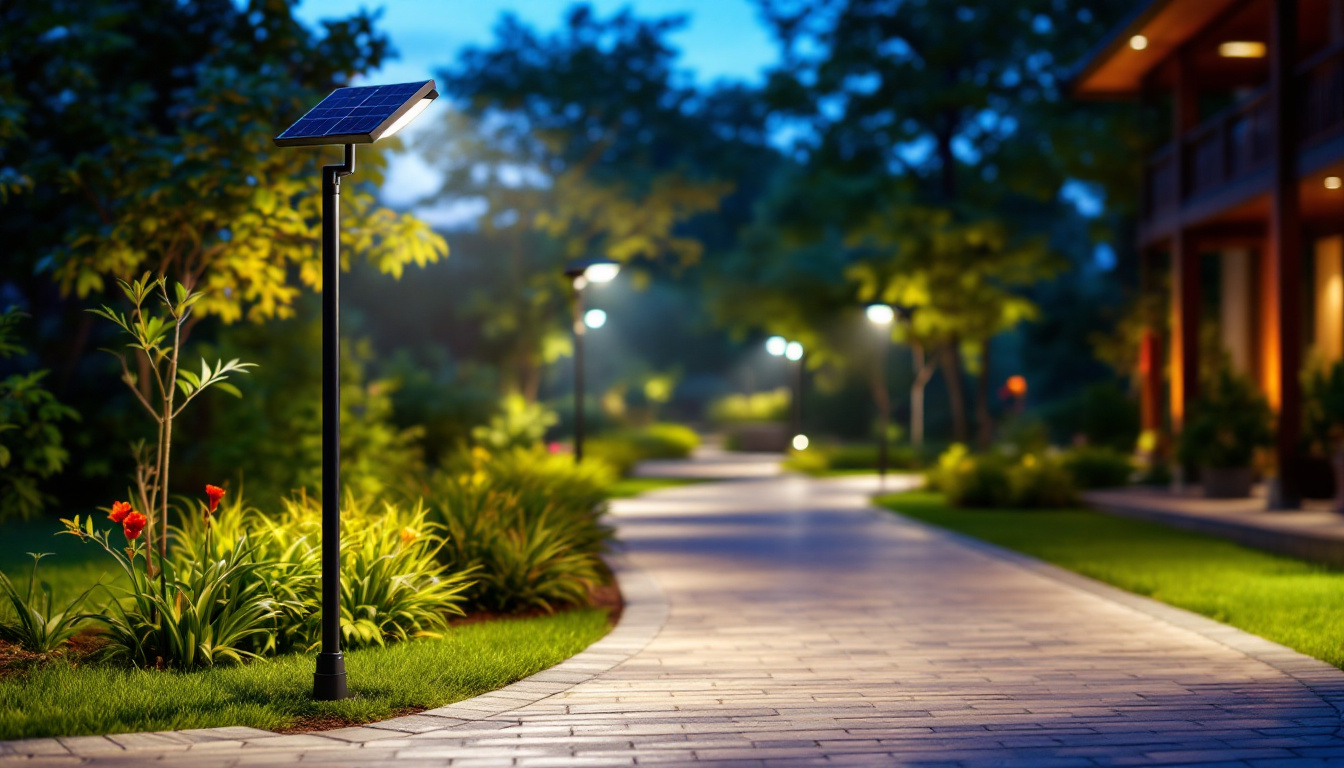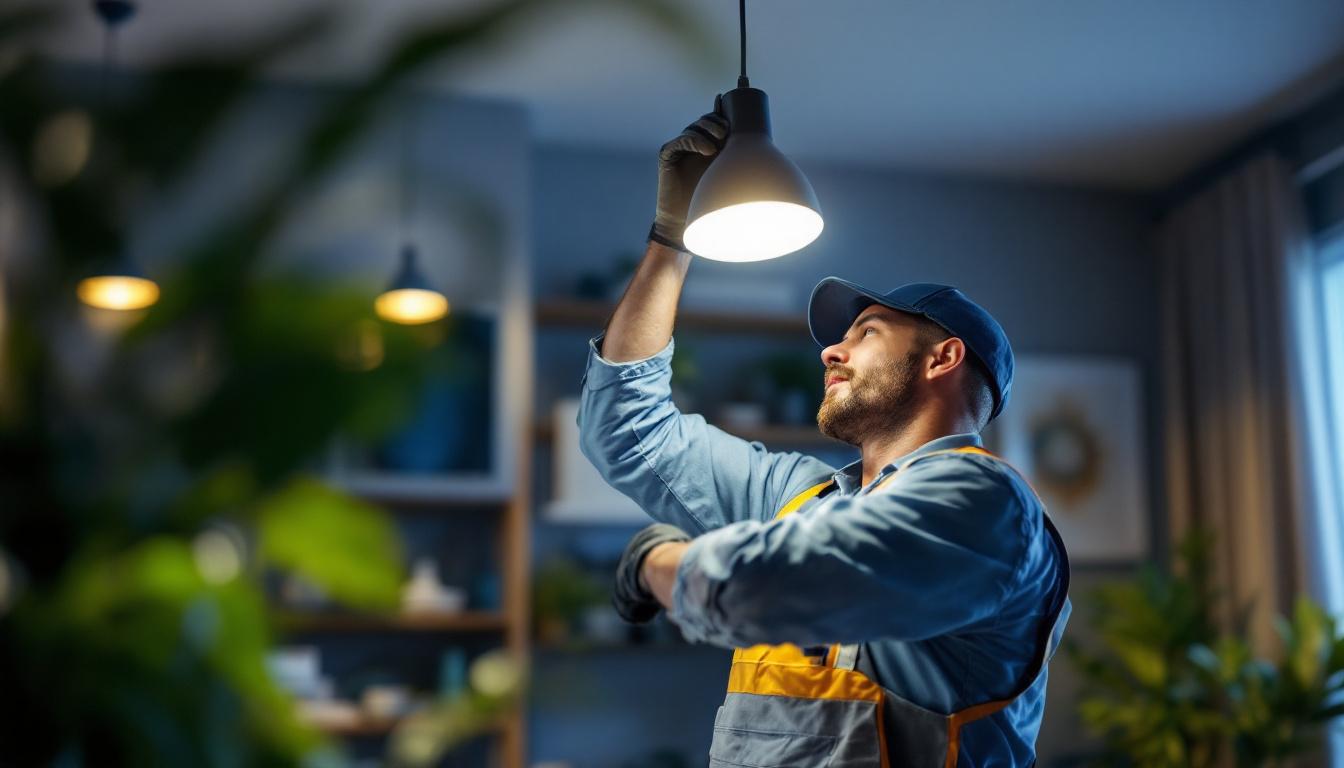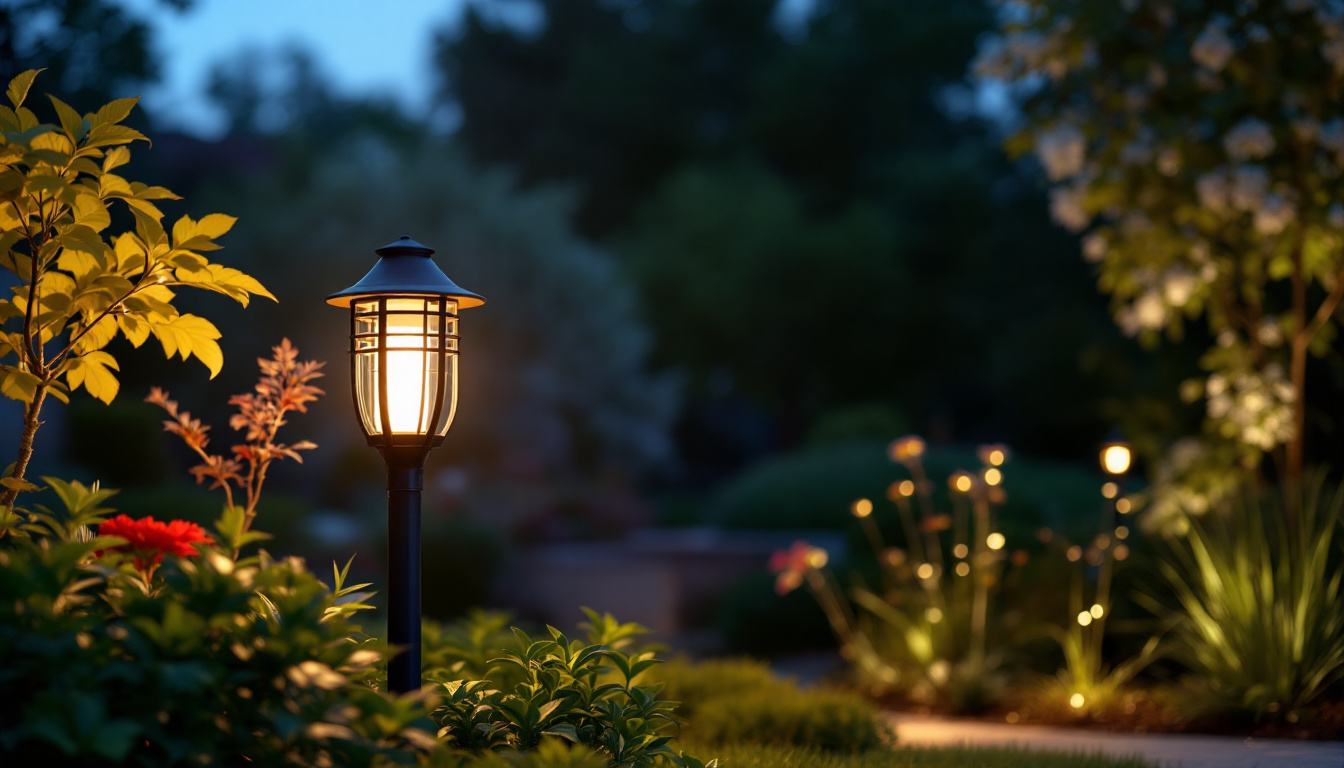
In recent years, the demand for solar outside pole lights has surged, driven by the increasing need for energy-efficient and environmentally friendly lighting solutions. These lights offer a sustainable alternative to traditional electric lighting, making them an attractive option for many residential and commercial projects. However, lighting contractors must navigate various challenges to ensure successful installations and satisfied clients.
This article aims to provide lighting contractors with insights into common issues associated with solar outside pole lights and practical strategies to avoid them. By understanding these challenges, contractors can enhance their service quality and client satisfaction while promoting the benefits of solar lighting.
One of the primary advantages of solar outside pole lights is their ability to harness renewable energy from the sun, which not only reduces electricity costs but also minimizes the carbon footprint of a property. These lights are equipped with solar panels that convert sunlight into electricity, allowing them to operate independently of the grid. This feature is particularly beneficial in remote areas where traditional electrical infrastructure may be lacking or too costly to install. Additionally, advancements in solar technology have led to improved battery storage systems, enabling these lights to function effectively even on cloudy days or during the night, thereby enhancing their reliability.
Moreover, solar outside pole lights come in a variety of designs and brightness levels, catering to different aesthetic preferences and functional requirements. From sleek modern fixtures to classic lantern styles, contractors can offer clients a range of options that complement their outdoor spaces. Furthermore, many solar lights now incorporate smart technology, such as motion sensors and timers, which can further optimize energy usage and enhance security. As the market continues to evolve, staying updated on the latest innovations will empower contractors to provide cutting-edge solutions that meet the diverse needs of their clientele.
Before delving into the potential issues, it is essential to grasp the fundamental technology behind solar outside pole lights. These lights typically consist of solar panels, LED fixtures, batteries, and control systems. The solar panels collect sunlight during the day, converting it into electricity, which is stored in batteries for nighttime use. This innovative approach not only reduces reliance on traditional power sources but also promotes sustainability by harnessing renewable energy.
While the technology is relatively straightforward, several factors can influence performance and reliability. Understanding these components is crucial for contractors to make informed decisions regarding product selection and installation practices. Moreover, the integration of smart technology in solar lighting systems is becoming increasingly common, allowing for features such as motion sensors and remote control, which can enhance energy efficiency and user convenience.
The efficiency of solar panels is a critical factor in the overall performance of solar outside pole lights. Various types of solar panels are available, including monocrystalline, polycrystalline, and thin-film. Each type has its advantages and disadvantages, affecting factors such as efficiency, cost, and lifespan. Monocrystalline panels, for instance, are known for their high efficiency and sleek appearance, making them a popular choice for residential and commercial applications alike.
Contractors should consider the specific needs of each project when selecting solar panels. For example, in areas with limited sunlight, high-efficiency monocrystalline panels may be more suitable, despite their higher cost. Understanding the local climate and sunlight exposure can help contractors make better choices. Additionally, the angle and orientation of the solar panels play a significant role in maximizing their exposure to sunlight, which can further enhance energy collection and overall performance.
The battery is another vital component that directly impacts the performance of solar outside pole lights. The type and capacity of the battery determine how much energy can be stored and for how long the lights will operate during the night. A well-chosen battery not only ensures that the lights function optimally but also contributes to the overall efficiency of the solar lighting system.
Contractors should be aware of the different battery technologies available, such as lead-acid and lithium-ion. While lead-acid batteries are more affordable, they often have a shorter lifespan and lower efficiency compared to lithium-ion batteries. Choosing the right battery type for each project can significantly affect the longevity and reliability of the lighting system. Furthermore, advancements in battery technology, such as the development of hybrid systems that combine different battery types, are paving the way for more versatile and efficient energy storage solutions, which can be particularly beneficial in applications where energy demands fluctuate significantly.
Despite the advantages of solar lighting, several common issues can arise during installation and operation. Understanding these challenges can help contractors proactively address them, ensuring a smoother installation process and better outcomes for clients.
One of the most significant challenges with solar outside pole lights is insufficient sunlight exposure. If the solar panels are not placed in areas where they can receive adequate sunlight, the lights may not function correctly or may operate for shorter periods than expected.
Contractors should conduct thorough site assessments before installation. This includes analyzing the surrounding environment for potential obstructions, such as trees, buildings, or other structures that could cast shadows on the solar panels. By ensuring optimal placement, contractors can enhance the performance of the lighting system. Additionally, it may be beneficial to consider seasonal variations in sunlight, as certain areas may experience changes in sunlight availability throughout the year. By taking these factors into account, contractors can better advise clients on the best locations for their solar lights, maximizing efficiency and minimizing future issues.
Another common issue arises from improper installation techniques. Solar outside pole lights require specific mounting and positioning to function effectively. If the lights are not installed correctly, it can lead to a range of problems, including instability, misalignment, and reduced efficiency.
To avoid these issues, contractors should adhere to manufacturer guidelines and best practices during installation. This includes ensuring that the solar panels are angled correctly to maximize sunlight exposure and that the fixtures are securely mounted to withstand environmental conditions. Furthermore, the use of high-quality mounting hardware is essential to prevent rust and corrosion, especially in coastal or humid environments. By investing time in proper installation techniques, contractors can significantly reduce the likelihood of future maintenance issues and enhance the durability of the lighting systems.
Battery maintenance is crucial for the longevity and reliability of solar outside pole lights. Many contractors overlook the importance of battery care, leading to premature failures and reduced performance. Regular maintenance checks can help identify potential issues before they escalate.
Contractors should educate clients about the expected lifespan of the batteries used in their solar lighting systems and recommend replacement schedules. By proactively managing battery health, contractors can enhance the overall performance and satisfaction of their solar lighting installations. Additionally, it is important to inform clients about the different types of batteries available, such as lithium-ion or lead-acid, as each type has its own advantages and disadvantages. Understanding these differences can help clients make informed decisions regarding their solar lighting systems and ensure they are equipped with the best technology for their specific needs. Regular monitoring of battery performance can also alert contractors to any irregularities, allowing for timely interventions that can prevent larger issues down the line.
To mitigate the common issues associated with solar outside pole lights, contractors can adopt several strategies that promote successful installations and long-term performance.
A comprehensive site assessment is essential for identifying potential obstacles and determining the best locations for solar lights. Contractors should evaluate the site’s sunlight exposure, landscape features, and existing electrical infrastructure.
By taking the time to assess the site thoroughly, contractors can make informed decisions about the type and placement of solar lights, ultimately leading to better performance and client satisfaction.
Client education is a vital component of successful solar lighting installations. Contractors should take the time to explain the benefits and limitations of solar outside pole lights to their clients. This includes discussing factors such as expected performance, maintenance requirements, and potential challenges.
By setting realistic expectations, contractors can foster trust and satisfaction among clients, reducing the likelihood of misunderstandings or dissatisfaction down the line.
Offering regular maintenance services can significantly enhance the longevity and performance of solar outside pole lights. Contractors can establish maintenance schedules that include battery checks, cleaning of solar panels, and inspections of the overall system.
By providing ongoing support, contractors can ensure that their clients’ solar lighting systems continue to operate efficiently, leading to long-term satisfaction and potential referrals for future projects.
Investing in high-quality solar outside pole lights can help contractors avoid numerous issues associated with lower-quality products. While it may be tempting to choose cheaper options, the long-term benefits of quality products often outweigh the initial cost.
Contractors should conduct thorough research on manufacturers before selecting solar lighting products. This includes examining product specifications, warranties, and customer reviews. Reputable manufacturers often provide detailed information about their products, including performance metrics and expected lifespans.
By partnering with trusted manufacturers, contractors can ensure that they are offering their clients reliable and efficient solar lighting solutions.
Understanding the specifications of solar outside pole lights is crucial for making informed purchasing decisions. Contractors should familiarize themselves with key metrics such as lumen output, battery capacity, and solar panel efficiency.
By understanding these specifications, contractors can select products that meet the specific needs of each project, ensuring optimal performance and client satisfaction.
Solar outside pole lights present a valuable opportunity for lighting contractors to offer sustainable and energy-efficient lighting solutions. However, navigating the challenges associated with these products requires careful consideration and proactive strategies.
By understanding the technology behind solar lighting, recognizing common issues, and implementing effective installation practices, contractors can enhance their service quality and client satisfaction. Investing in quality products and maintaining open communication with clients will further contribute to successful solar lighting projects.
As the demand for solar lighting continues to grow, contractors who prioritize education, quality, and maintenance will position themselves as leaders in the industry, paving the way for a brighter, more sustainable future.
Ready to elevate your lighting installations with the best in solar outside pole lights? At LumenWholesale, we offer a vast array of top-quality, spec-grade lighting products designed to meet the needs of the most discerning contractors. With unbeatable wholesale prices and the convenience of free shipping on bulk orders, you can trust us to provide the superior lighting solutions your projects deserve. Say goodbye to inflated markups and hello to the perfect combination of quality, affordability, and hassle-free service. Don’t compromise on your lighting—choose LumenWholesale for Wholesale Lighting at the Best Value and make your next project shine.

Explore the rising significance of lamp post lights with outlets in the lighting industry.

Discover how Maxlite LED lamps can boost lighting efficiency by up to 80%. Learn expert tips to optimize performance, save energy, and reduce costs today!.

Discover the essential strategies and tools for lighting contractors in “Lighting Heat: The Ultimate Guide.” This comprehensive article covers everything from innovative design techniques to energy-efficient solutions, ensuring your projects shine brightly and sustainably.

Explore essential insights and expert tips for lighting contractors on selecting and installing outdoor yard lamps.